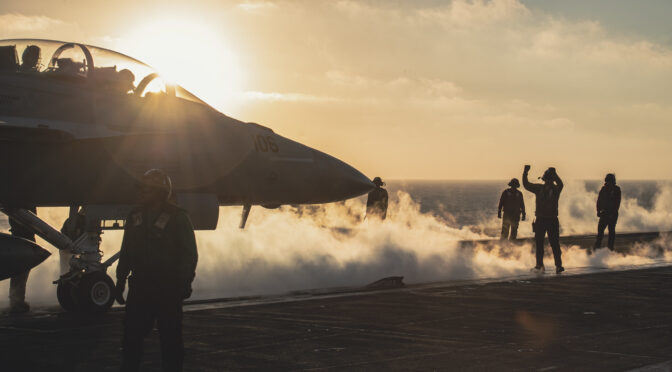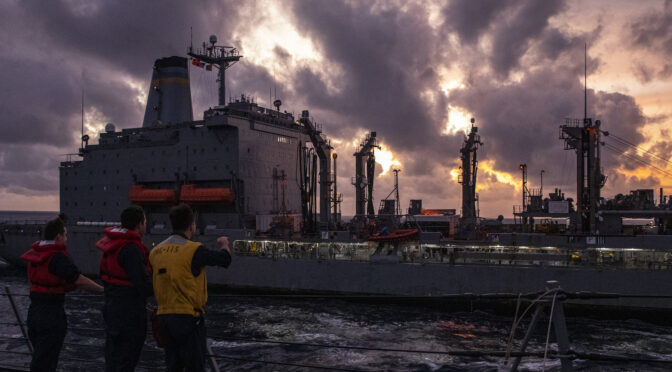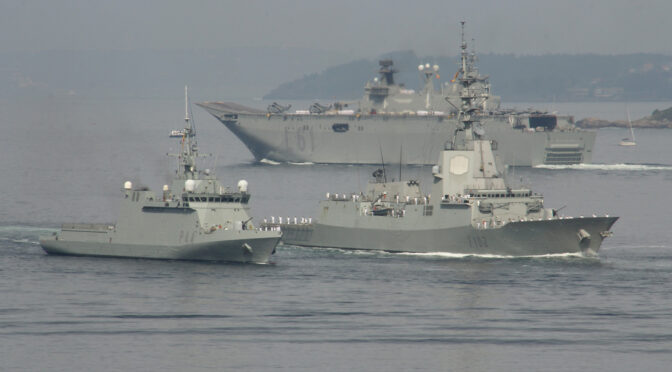By John Hanley
I was fortunate to work directly for CNOs Tom Hayward through Jay Johnson during my 17 years with the CNO Strategic Studies Group, where the CNOs tasked us to study challenges that were keeping them up at night or where they saw opportunities to advance the Navy and national security. Three challenges stand out for the current generation of Navy leadership.
First, getting real is a matter of integrity. Striving to do one’s best is imperative. However, it is essential to get real about what resources, including time, are available to accomplish tasks. Tasking more than can be accomplished results in fudging and corrupting the character of individuals and the soul of the Navy.
Second, getting better requires appreciating the complexity of the Navy and its place in the national security ecosystem. Sources of complexity within the Navy and in the ecosystem derive in part from individuals and organizations having incongruent motivations. As Admiral Bill Owens once said as the N8, there must be a god because no one is in control. Accepting limits of control is the beginning of wisdom. Although leaders cannot direct the winds, they can adjust the sails.
Adjusting the sails to stay on course requires campaigns of learning in readiness, engagement, and equipping strategies. Actions should derive from more than just routine checklists. They require deliberate reflection on what is to be learned. Whether it is maintenance and administration, training and education, at-sea exercises, engagement with adversaries and partners (e.g., FONOPS), or creating antifragile naval architectures, if the participants are simply box-checking rather than learning, the effort is falling short. The Navy must be more deliberate about being a learning organization and how it structures its campaigns of learning.
Dealing with complexity requires careful reflection on how strategies are framed, and considering uncomfortable alternatives. It requires balancing theoretical constructs with practical intuition and experience, and a willingness to challenge theory. Rather than OODA loops, complexity requires Act-Sense-Decide-Adapt loops. Passive observation does not reveal what needs to be known without stimulating the system to learn, and change requires adaptation. It requires using strategies to achieve increasing returns, such as where small investments are made in specific high-risk ventures to learn a lot while still protecting core capabilities.
Finally, it requires rethinking the defense analysis paradigms that have constrained Navy thinking and development since McNamara instituted them in 1962. N81’s focus on campaign modeling rather than Navy wholeness, as formulated by CNO Admiral Jon Greenert, is a misdirected approach. Campaign models are wholly theoretical and produce only conjecture regarding system performance at sea. Similarly, wargames produce only conjecture about decisions and outcomes. But when used well, the experience of conducting critical analysis in anticipated scenarios helps prepare future commanders for real contingencies, as wargames and exercises did before WWII.
The way ahead involves campaigns of learning focused on pressing operational problems. These campaigns would be orchestrated by a General Board-type entity, involving close interactions among OPNAV, the Naval War College, the Naval Postgraduate School, the Systems Commands, and the fleet. These campaigns would focus the attention of the fleet, and enhance its competitive advantage by virtue of being a superior learning organization.
Dr. Hanley served with the first eighteen Chief of Naval Operations Strategic Studies Groups as an analyst, program director, and deputy director. He earned his doctorate in operations research and management science at Yale University. A former U.S. Navy nuclear submarine officer and fleet exercise analyst, and author of The US Navy and the National Security Establishment: A Critical Assessment.
Featured Image: PACIFIC OCEAN (Aug. 26, 2023) An F/A-18F Super Hornet from the “Fighting Redcocks” of Strike Fighter Squadron (VFA) 22 prepares to launch from the flight deck of the aircraft carrier USS Nimitz (CVN 68). (U.S. Navy photo by Mass Communication Specialist 2nd Class David Rowe)





